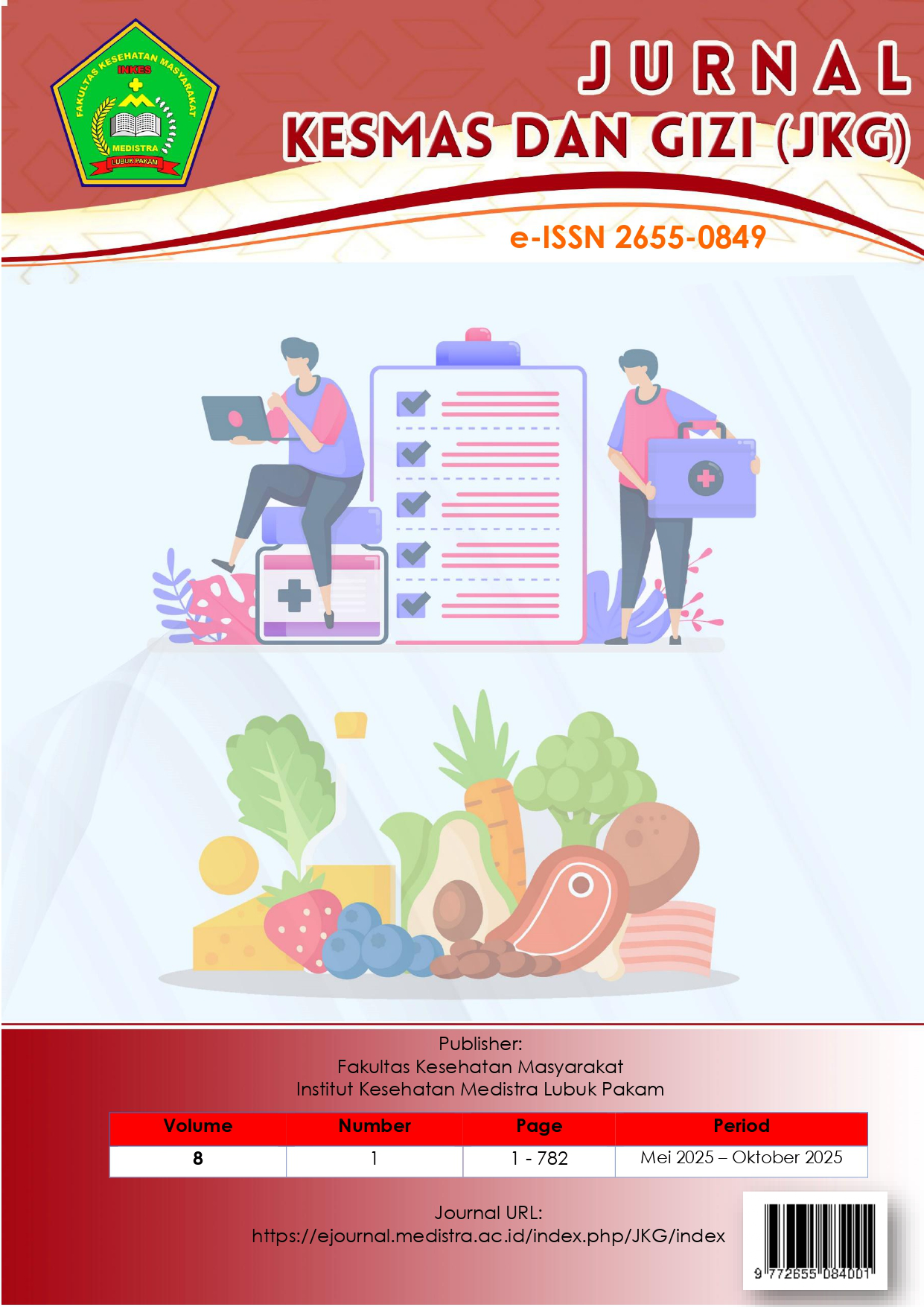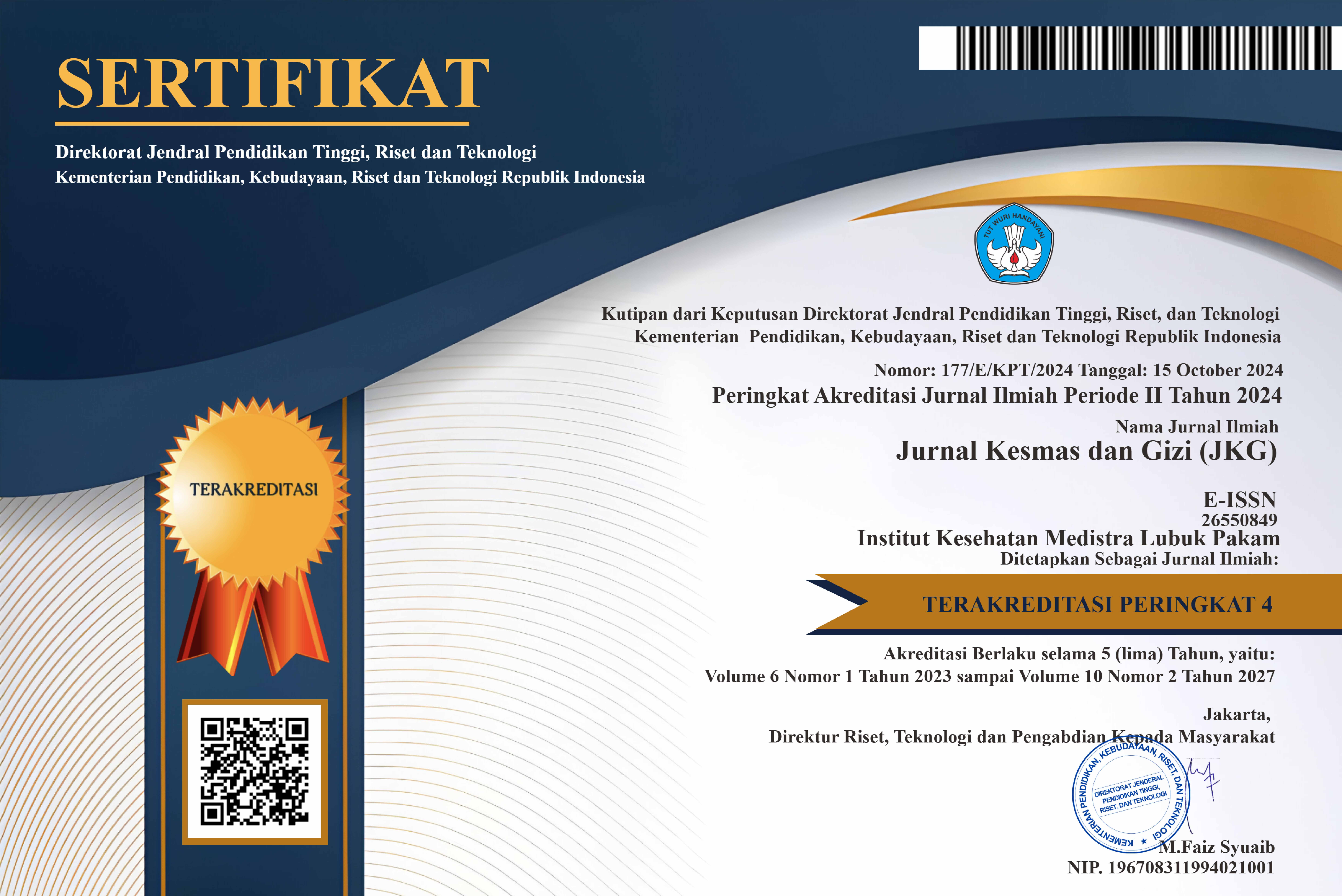Implementation of Lean Hospital in the Pharmacy Service at the Outpatient Department of a General Hospital
DOI:
https://doi.org/10.35451/gr8fch53Keywords:
Waiting Time, Medication Service, Value Stream Mapping, WasteAbstract
Background: The medication service at the Outpatient Pharmacy of RSUD Drs. H. Amri Tambunan experiences long waiting times, especially for BPJS guarantee prescriptions, which contradicts the established service time standards, i.e., dispensing medications ? 30 minutes and preparing compounded medications ? 60 minutes, in accordance with health service regulations. Research Objective: This study aims to analyze the waiting times for medication services at the Outpatient Pharmacy, identify types of waste within the service process flow, and identify factors that hinder service efficiency. Additionally, the study aims to provide recommendations for improvement to reduce waiting times and enhance service quality. Research Method: This qualitative study uses Value Stream Mapping (VSM) to analyze the medication service process and identify waste in each service stage. Additionally, a fishbone diagram is used to identify root causes affecting waiting times. Data is collected through interviews with pharmacy staff, the head of the pharmacy installation, and direct field observations. Research Results: This study found various types of waste in each stage of the medication service, including waiting, motion, defects, and overproduction. Factors hindering service time include patient congestion during peak hours, medication unavailability, and prescription inconsistencies with the formularium. Suboptimal use of information systems and a shortage of pharmacists were also identified as major hindrances. Conclusion: Improvements in process flow, coordination between departments, routine training, and the implementation of an integrated hospital management information system are needed to minimize waste and expedite service times at the Outpatient Pharmacy of RSUD Drs. H. Amri Tambunan.
Downloads
References
[1] Kementerian Kesehatan Republik Indonesia (Kemenkes RI). (2020). Peraturan Menteri Kesehatan Republik Indonesia Nomor 56 Tahun 2020 tentang Penyelenggaraan Rumah Sakit. Jakarta: Kemenkes RI.
[2] Owad, I., et al. (2018). Tantangan dalam Meningkatkan Efisiensi Biaya Layanan Kesehatan di Rumah Sakit. Jurnal Manajemen Rumah Sakit, 18(2), 47-56.
[3] Graban, M. (2016). Lean Hospitals: Improving Quality, Patient Safety, and Employee Engagement. CRC Press.
[4] Ferdi, S. (2023). Penerapan Lean Hospital pada Pelayanan Rawat Jalan Rumah Sakit. Jurnal Administrasi Rumah Sakit, 30(1), 33-42.
[5] Ayele, D. (2019). Peran Instalasi Farmasi dalam Menunjang Kualitas Pelayanan Kesehatan di Rumah Sakit. Jurnal Kefarmasian Indonesia, 11(2), 129-135.
[6] Denny, T., et al. (2023). Analisis Pemborosan (Waste) dalam Proses Pelayanan Obat di Instalasi Farmasi Rawat Jalan Rumah Sakit. Jurnal Manajemen Rumah Sakit, 22(1), 89-98.
[7] Womack, J. P. (2020). Lean Thinking: Banish Waste and Create Wealth in Your Corporation. Simon & Schuster.
[8] Iswanto, D. (2019). Tantangan Implementasi Lean dalam Meningkatkan Kualitas Pelayanan di Rumah Sakit. Jurnal Sistem Kesehatan, 17(3), 142-150.
[9] Widiyas, R. (2021). Implementasi Lean Healthcare dalam Meningkatkan Efisiensi Pelayanan Kesehatan. Jurnal Ilmiah Kesehatan, 16(2), 201-212.
[10] Rusdianah, I. (2017). Waktu tunggu pelayanan resep di apotek rawat jalan RSUD: Tahapan dan pengaruhnya terhadap waktu pelayanan. Jurnal Farmasi, 3(2), 56-64.
[11] Suryana, D. (2018). Value Stream Mapping (VSM) dalam manajemen pelayanan kesehatan: Pemetaan value-added dan non-value-added activities. Jurnal Manajemen Kesehatan, 4(1), 101-110.
[12] Lawal, M. et al. (2020). Penggunaan Value Stream Mapping dalam memetakan aliran pelayanan kesehatan dan identifikasi pemborosan. Jurnal Kesehatan, 8(3), 213-220.
[13] Septini, R. (2020). Penumpukan resep pada jam sibuk di apotek rawat jalan dan pengaruhnya terhadap waktu tunggu pelayanan. Jurnal Farmasi dan Manajemen, 5(4), 120-128.
[14] Loh, B.C., et al. (2017). Impact of patient influx on prescription processing times at Queen Elizabeth Hospital, Kinibalu, Malaysia. Journal of Health Services Research, 12(2), 110-118.
[15] Wijaya, N. (2020). Proses verifikasi dan pengemasan obat di apotek rawat jalan: Pemborosan dan solusi dalam pengelolaan waktu pelayanan. Jurnal Administrasi Kesehatan, 9(1), 25-34.
[16] Purwandari, D., et al. (2016). Proses penerimaan resep dan tantangan dalam pelayanan obat di apotek rumah sakit: Identifikasi waste dan solusi perbaikan. Jurnal Manajemen Rumah Sakit, 6(3), 77-85.
[17] Karuniawati, Y., dkk. (2016). Waktu tunggu pelayanan obat racikan di apotek rawat jalan dan faktor-faktor yang mempengaruhinya. Jurnal Farmasi Klinis, 7(2), 50-60.
[18] Graban, M. (2020). Lean Hospitals: Improving Quality, Patient Safety, and Employee Engagement. CRC Press.
[19] Nurul Fitriah, dkk. (2016). Pengaruh Ketidakpatuhan DPJP terhadap Formularium terhadap Waktu Pelayanan Obat di Rumah Sakit. Jurnal Manajemen Pelayanan Kesehatan, 14(1), 56-63.
[20] Purwandari, N., dkk. (2017). Analisis Faktor-Faktor yang Mempengaruhi Kualitas Pelayanan di Instalasi Farmasi Rumah Sakit: Studi Kasus di RSUD XYZ. Jurnal Manajemen dan Pelayanan Kesehatan, 5(2), 110-115.
[21 ]Wijaya, N. (2020). Evaluasi waktu tunggu pelayanan resep di apotek rawat jalan RSUD Drs. H. Amri Tambunan. Jurnal Farmasi Indonesia, 22(1), 23-29.
[22] Winn, R. (2015). The Impact of Integrated Hospital Information Systems on Pharmacy Services: A Case Study at Canadian Hospitals. Canadian Pharmacist Journal, 148(3), 123-130.
Downloads
Published
Issue
Section
License
Copyright (c) 2025 Irma Jayanti, Felix Kasim, Sri Melda Br Bangun

This work is licensed under a Creative Commons Attribution 4.0 International License.
Copyright in each article is the property of the Author.


























